N-Cyclohexylmaleimide
- CAS NO.:1631-25-0
- Empirical Formula: C10H13NO2
- Molecular Weight: 179.22
- MDL number: MFCD00043904
- EINECS: 216-630-6
- SAFETY DATA SHEET (SDS)
- Update Date: 2023-04-23 13:52:06
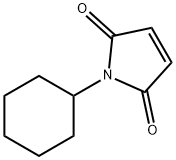
What is N-Cyclohexylmaleimide?
The Uses of N-Cyclohexylmaleimide
N-Cyclohexylmaleimide (CHMI, NCMI) may be used for the preparation of hyperbranched copolymers of p-(chloromethyl)styrene (CMS) and NCMI, via atom transfer radical copolymerization reaction.
Synthesis Reference(s)
Synthetic Communications, 20, p. 1607, 1990 DOI: 10.1080/00397919008053079
General Description
N-Cyclohexylmaleimide (CHMI, NCMI) is a cyclic imide. Diels-Alder reactions of 9-hydroxymethylanthracene with CHMI catalyzed by hydrophobic nanospace confined within the self-assembled Pd6 open cage bearing triimidazole walls have been reported. It undergoes Diels-Alder reactions with various aromatic hydrocarbons promoted by self-assembled coordination cage. This cage acts as nanometer-sized molecular flask and hence promotes this reaction. CHMI is reported to undergo radical polymerization readily under various polymerization conditions to afford poly(CHMI), having excellent thermal stability.
Flammability and Explosibility
Not classified
Properties of N-Cyclohexylmaleimide
| Melting point: | 89-91 °C (lit.) |
| Boiling point: | 132 °C / 17mmHg |
| Density | 1.226±0.06 g/cm3(Predicted) |
| vapor pressure | 80Pa at 25℃ |
| storage temp. | Inert atmosphere,Room Temperature |
| solubility | Insoluble in water |
| form | powder to lump |
| pka | -2.26±0.20(Predicted) |
| color | White to Almost white |
| Water Solubility | 260mg/L at 25℃ |
| CAS DataBase Reference | 1631-25-0(CAS DataBase Reference) |
| EPA Substance Registry System | 1H-Pyrrole-2,5-dione, 1-cyclohexyl- (1631-25-0) |
Safety information for N-Cyclohexylmaleimide
| Signal word | Danger |
| Pictogram(s) |
 Skull and Crossbones Acute Toxicity GHS06  Environment GHS09 |
| GHS Hazard Statements |
H301:Acute toxicity,oral H315:Skin corrosion/irritation H317:Sensitisation, Skin H319:Serious eye damage/eye irritation H335:Specific target organ toxicity, single exposure;Respiratory tract irritation H410:Hazardous to the aquatic environment, long-term hazard |
| Precautionary Statement Codes |
P261:Avoid breathing dust/fume/gas/mist/vapours/spray. P273:Avoid release to the environment. P280:Wear protective gloves/protective clothing/eye protection/face protection. P301+P310:IF SWALLOWED: Immediately call a POISON CENTER or doctor/physician. P302+P352:IF ON SKIN: wash with plenty of soap and water. P305+P351+P338:IF IN EYES: Rinse cautiously with water for several minutes. Remove contact lenses, if present and easy to do. Continuerinsing. |
Computed Descriptors for N-Cyclohexylmaleimide
New Products
4-AMINO-TETRAHYDRO-PYRAN-4-CARBOXYLIC ACID HCL 4-(Dimethylamino)tetrahydro-2H-pyran-4-carbonitrile 4-Aminotetrahydropyran-4-carbonitrile Hydrochloride (R)-3-Aminobutanenitrile Hydrochloride 3-((Dimethylamino)methyl)-5-methylhexan-2-one oxalate 1,4-Dioxa-8-azaspiro[4.5]decane 5-Bromo-2-nitropyridine Nimesulide BP Aceclofenac IP/BP/EP Diclofenac Sodium IP/BP/EP/USP Mefenamic Acid IP/BP/EP/USP Ornidazole IP Diclofenac Potassium THOMAIND PAPER PH 2.0 TO 4.5 1 BOX BUFFER CAPSULE PH 9.2 - 10 CAP SODIUM CHLORIDE 0.1N CVS ALLOXAN MONOHYDRATE 98% PLATINUM 0.5% ON 3 MM ALUMINA PELLETS (TYPE 73) LITHIUM AAS SOLUTION 2-Bromo-1-(bromomethyl)-3-chloro-5-nitrobenzene 2-Bromo-3-nitroaniline N-(3-Hydroxypropyl)-N-methylacetamide 3-Bromo-6-chloropyridazine 4-ethyl-3-nitrobenzoic acidRelated products of tetrahydrofuran
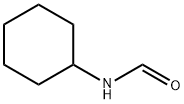

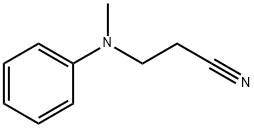
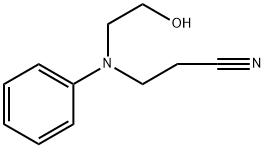
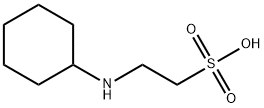
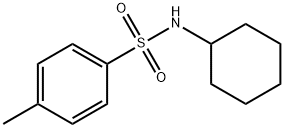
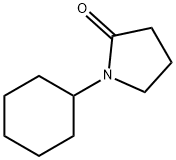
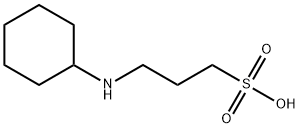
You may like
-
 N-Cyclohexylmaleimide CAS 1631-25-0View Details
N-Cyclohexylmaleimide CAS 1631-25-0View Details
1631-25-0 -
 N-Cyclohexylmaleimide 97% (HPLC) CAS 1631-25-0View Details
N-Cyclohexylmaleimide 97% (HPLC) CAS 1631-25-0View Details
1631-25-0 -
 N-Cyclohexylmaleimide 98% CAS 1631-25-0View Details
N-Cyclohexylmaleimide 98% CAS 1631-25-0View Details
1631-25-0 -
 N-Cyclohexylmaleimide CAS 1631-25-0View Details
N-Cyclohexylmaleimide CAS 1631-25-0View Details
1631-25-0 -
 1823368-42-8 98%View Details
1823368-42-8 98%View Details
1823368-42-8 -
 2-(3-(tert-butyl)phenoxy)-2-methylpropanoic acid 1307449-08-6 98%View Details
2-(3-(tert-butyl)phenoxy)-2-methylpropanoic acid 1307449-08-6 98%View Details
1307449-08-6 -
 Ethyl 3-(furan-2-yl)-3-hydroxypropanoate 25408-95-1 98%View Details
Ethyl 3-(furan-2-yl)-3-hydroxypropanoate 25408-95-1 98%View Details
25408-95-1 -
 Lithium ClavulanateView Details
Lithium ClavulanateView Details
61177-44-4